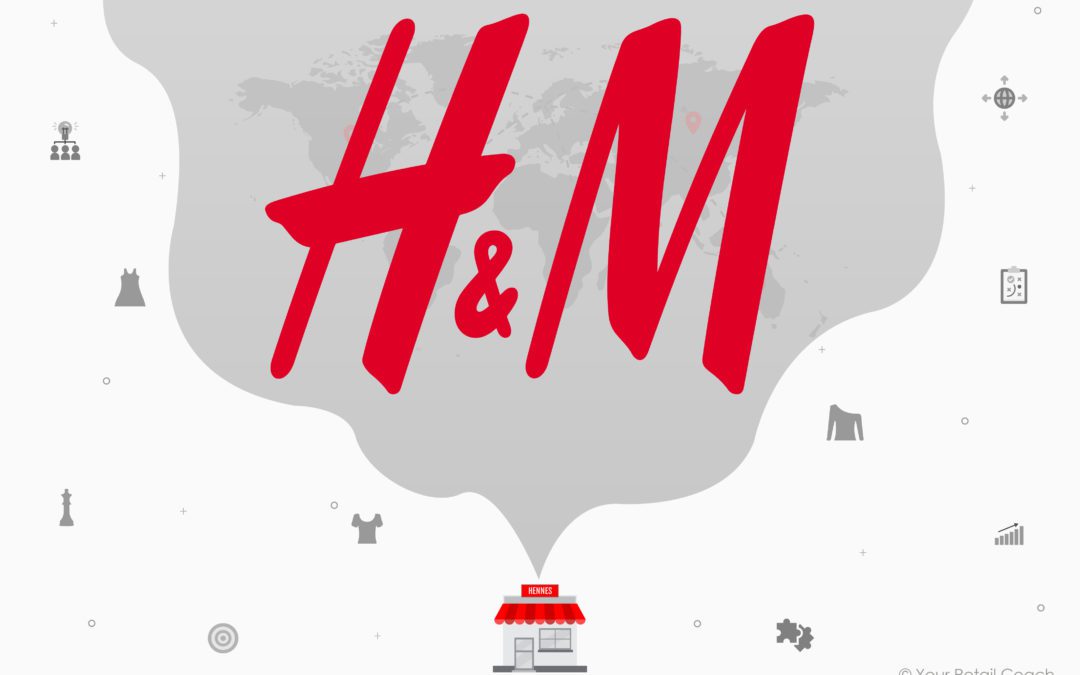Reading Time: 5 minutes 20 Seconds
Originally named, “Hennes” the iconic fashion brand H&M was founded by Erling Persson in 1947 in Vasteras, Sweden. Right from its inception, H&M believed in making fashion affordable.
With the acquisition of the hunting apparel brand Mauritz Widforss, Erling changed the name of the company to Hennes and Mauritz. This change reflected the change in strategy of the fashion brand to include menswear into their product range. To make the brand easier to remember and pronounce, an official rebranding exercise was conducted and the name was shortened to H&M.
Soon after conducting this rebranding exercise, the company expanded its wings to two neighboring Nordic countries – Norway and Denmark. Switzerland and the United Kingdom were next on the list and by 1973 the company began selling intimate apparels all over Europe.
Business model of H&M
H&M follows a business model which is known as ‘fast fashion’. In fast fashion, the time taken for fashion design to travel from the ramp to stores is very less. The main crux of this business model is to provide affordable fashion to customers at a lightning speed. To achieve this, H&M follows a unique business model in which it does not manufacture any of its products in-house; instead, H&M outsources its production to many developing countries.
Reduced burden of internal operations as a result of outsourcing allows H&M to focus on its core business model which is to make fashion merchandise quickly cover the distance from the designer tables and ramps to the storefronts. This strategy has played a major role in the expansion of H&M.
According to Investopedia, more than 900 international suppliers are currently supplying to H&M. Another strategy that allows H&M to be effective in fast fashion is that it pre stocks a major chunk of its merchandise and lends itself space for last-minute improvisation with the remaining.
The top ten markets for H&M are Germany, the USA, the U.K., France, China, Sweden, Italy, Spain, Russia, and Poland with the total number of stores worldwide slightly shy of the 5K mark. Apart from these countries, via the eCommerce and/or franchise route, H&M has a presence in India, China, Israel, U.A.E, Kuwait, Qatar, Saudi Arabia, Egypt, Bahrain, Oman, Lebanon, Morocco, Jordan, Thailand, and Indonesia. H&M plans to add 290 new stores and close around 170 stores as a part of consolidation efforts by the group. Out of the planned 290 stores, 220 will be H&M stores and the remaining will be via other brands that H&M manages like COS, & Other Stories, Monki, ARKET, and H&M Home stores.
Expansion strategies of H&M
Entering the U.S. market
H&M inaugurated its first store outside European shores in New York City. The company was bold enough to open a store on Fifth Avenue where it competed directly with renowned luxury labels that dominated the shopping district.
In New York, the brand, instead of going head-on with the big labels, adopted a smart strategy of collaborating with its competitors. An example of this would be their first designer collaboration series with Karl Lagerfeld. The idea was to provide consumers with a limited edition collection which was easy on the pockets and allowed the consumers to wear the designs of their favorite designers affordably. This strategy proved wildly successful and H&M invited other major designers like Donatella Versace, Roberto Cavalli, Stella McCartney, and Alexander Wang in similar partnerships. This expansion strategy of collaborating with major designers helped H&M in getting a foothold in the fashion market of New York City. Associating with fashion designers/labels of high brand equity has helped H&M in expanding easily into new markets.
Selective use of the franchise route
H&M, currently, follows a direct expansion strategy by taking the route of having its stores. In many countries, however, such a direct approach is sometimes not very encouraging and in such cases, H&M adopted the franchise route. Regulatory hurdles have never stopped H&M from entering a new market. If the company thinks that the market is valuable for them, then it won’t hesitate in taking the franchise route.
H&M entered the Middle East market with its franchise partner Alshaya. H&M understood the high growth potential of the Middle East region and hence took the franchise route to gain a foothold in the region.
India expansion
Given India’s promising retail sector and emerging eCommerce space, H&M launched its eCommerce wing in the country last year (2019) by associating with a leading e-commerce platform – Myntra.
Throwback to 2015; H&M entered the Indian market with its first store in New Delhi. Since then, H&M has expanded its store count to 39, and it reported a phenomenal sales figure of over USD 154 million for the year 2018.
The success of H&M in India can be attributed to factors such as a focus on tier 2 and tier 3 cities, competitive pricing and a well-managed backend along with tight control on ad spending and other expenditures.
China Expansion
H&M entered mainland China by opening up two stores in Shanghai in the year 2007.
H&M’s opened its first online store in China in 2014 amidst stiff competition from established Chinese eCommerce players like Alibaba’s Tmall and Taobao. Turning adversity into an opportunity, H&M joined hands with Tmall in 2018. Keeping in line with its aggressive strategy, H&M has decided not to tinker much with the prices and product offerings on Tmall.
HRM learned from its mistakes in China and instead of trying to build an online website from scratch in India, H&M launched its products on Myntra, a popular eCommerce platform in India later in 2019.
As of 2019, H&M will be testing fashion on rent by partnering with China’s YCloset (a fashion rental platform). This will be the first instance for the brand to indulge in the idea of fashion on rent. YCloset is China’s largest clothing rental platform and has around 15 million users who pay a monthly subscription fee for renting expensive fashionable clothes indicating the strong currents with ‘fashion on rent’.
Going Green
Addressing climate change concerns in its ways, H&M has taken concrete steps in the direction of sustainable sourcing. The company, in its 2018 annual report, has clearly stated that its vision is to meet 100% of its cotton requirements from sustainable sources by 2020. The company has made considerable progress and has achieved 95 percent of its goals in 2018 regarding sustainable sourcing of cotton. According to the Textile Exchange’s Preferred Fiber and Materials Market Report 2018, the H&M group was the largest user of preferred cotton and second-largest for recycled and organic cotton.
The growth of H&M as an ecologically-sustainable brand can be ascertained from the fact that H&M was ranked 11th in the Green Ranking Global Top 100 List in 2017.
Having an environmentally-friendly policy assigns goodwill to H&M especially when it approaches foreign markets for expansion. Addressing environmental concerns is an appreciated initiative whether you are an H&M customer or not.
Employee-Sensitive
Apart from being an environmentally responsible company, H&M has also put special emphasis on being a sensitive employer. Forexample, H&M introduced a program for its factories in Cambodia and Bangladesh under which the company will purchase 100% of the factories’ output over five years. This gave a significant bargaining edge to H&M in ensuring towards maintaining safe working conditions in these factories as against focusing only on output.
Focus on economic production
Apart from opening retail stores, H&M has also opened manufacturing centers at strategic locations like Ethiopia in the backdrop of strategic business requirements and comparative economies of production in traditional manufacturing powerhouses like China and Bangladesh.
Advertising Campaigns
H&M also spends heavily on advertising. The brand spent $100 million on various advertising media like TV, print and digital. Having high brand visibility helps H&M in entrenching new markets easily.
About YRC
Your Retail Coach (YRC) is a retail consulting and outsourcing company in India offering a wide range of services in retail offline,retail eCommerce and retail omnichannel catering to a multitude of industries.
Your Retail Coach (YRC) helps retail businesses with their web store and online marketplace sales management strategies and practices with a focus on developing brand awareness. Our experience and expertise in both offline and online retail channels will help businesses quickly establish their retail operations and set their brands in motion.
YRC assists retail businesses in managing their supply chain via services and support in warehouse management, procurement, inventory management, dispatch and team management riding on proven models of logistics and use of technology.
YRC provides the necessary assistance to businesses in setting up and maintaining a robust distribution network across the country.With its domain experience and expertise in the retail sector, YRC not only helps retail players in managing online sales channels but also assists in setting up brick and mortar stores and provide a range of operational assistance services.
Get In Touch











